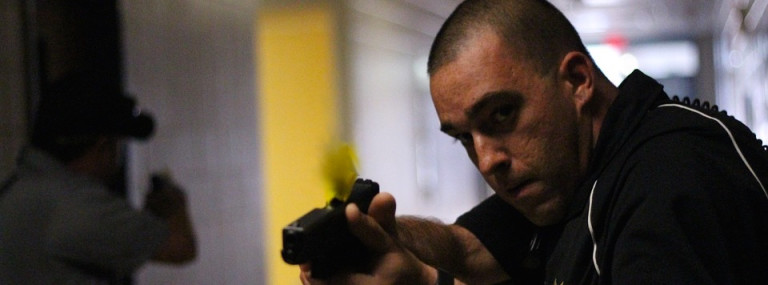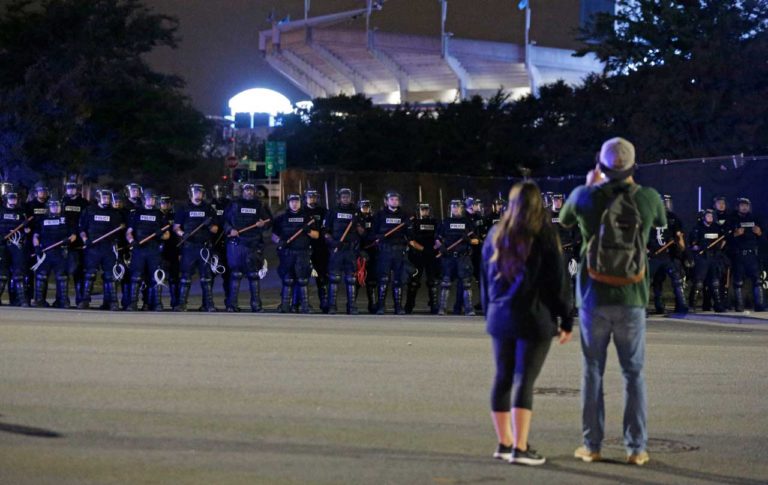Fighting Home Grown Terror

Predator: Clint Emerson, Navy SEAL ret.
Discussion: Best practices when inspired terrorists attack.
Every operator will tell you that tactics are like opinions, opinions are like assholes… everyone has one. Bottomline – at the end of any crisis, you want to be alive and free standing with adversaries at your feet. For that to come to fruition requires awareness, aggression and most importantly; tactical decision making. Decisions should NEVER be made during crisis – decisions should occur prior and acted out when crisis strikes. In other words, have a plan in your head to act out if/when home grown terror strikes. Below represents a mental blue print to decreasing exposure and increasing survivability – its a plan of decisions that you can activate once the first shot is fired.
Tactics: Immediate Actions: RUN, HIDE, FIGHT!
RUN. BE A MOVING TARGET! Have an escape route and plan in mind. Move away from the assailant immediately, keep your hands visible. Leave your belongings behind. If the assailant is active inside a specific building, move immediately to a safer location away from the assailant, only if it is safe to do so. If you find yourself in an open area, immediately seek protection:
- Put something between you and the assailant.
- Consider trying to escape, if you know where the assailant is and there appears to be an escape route immediately available to you.
- If in doubt, find the safest area available and secure it the best way that you can.
HIDE. TAKE COVER (COVER THAT STOPS BULLETS) Always try to hide with an exit strategy. Hide in an area out of the assailant’s view. Silence your cell phone and/or other digital devices. Secure the immediate area. Whether a classroom, office, residence hall room, restroom, or other type of confined or contained space:
- Lock or barricade the door, if possible. Block the door using whatever is available: desks, tables, file cabinets, other furniture, books, etc.
- After securing the door, stay behind solid objects away from the door as much as possible.
- If the assailant enters the room and leaves, lock or barricade the door behind them. If safe to do so, allow others to seek refuge with you.
- Close blinds.
- Block windows.
- Turn off radios and computer monitors.
- Silence cell phones.
- Place signs in interior doors and windows, but remember the assailant can see these as well.
- Place signs in exterior windows to identify your location and the location of injured persons.
- Keep people calm and quiet.
- Be aware that the assailant may not stop until his objectives have been met or until engaged and neutralized by law enforcement.
- Always consider the risk exposure by opening the door for any reason.
- Be aware that the assailant may bang on the door, yell for help, or otherwise attempt to entice you to open the door of a secured area.
- If there is any doubt about the safety of the individuals inside the room, the area needs to remain secured.
- After securing the room, people should be positioned out of sight and behind items that might offer additional protection – walls, desks, file cabinets, bookshelves, etc. Attempts to rescue people only should be made if it can be done without further endangering the persons inside of a secured area.
Call Out. USE CAUTION – Call for help using mobile devices, landline, email, text and radios to get first responders moving to your location. Attempt to provide information in a calm clear manner so that the other person can understand the situation and assist quickly with the right kind of response. You may hear multiple rings – stay on the line until it is answered – do not hang up. Be prepared to provide as much information as possible about the situation and assailant(s), including:
- What is happening?
- Your name and other information as requested.
- Where you are located, including building name and room number. Number of assailants.
- Specific location and direction of the assailant.
- Number and type of weapons held by assailant.
- Number of people at your specific location.
- Number of potential victims at the location.
- Injuries, if any, including the number of injured and types of injuries. Gender, race, and age of the assailant.
- Language or commands used by the assailant.
- Clothing color and style.
- Physical features – e.g., height, weight, facial hair, glasses. Type of weapons – e.g., handgun, rifle, shotgun, explosives. Description of any backpack or bag.
- Do you recognize the assailant? Do you know their name? What exactly did you hear – e.g., explosions, gunshots, etc.
FIGHT. BE VIOLENT, WORK AS A TEAM. The goal is create enough space and time between you and the assailant to escape to relative safety. As a last resort and only when your life is in imminent danger, and only if other options have failed or unavailable, attempt to incapacitate the assailant. Act with physical aggression and violence of action; throw anything available at the assailant. Work as a team when with others.
- Create a plan.
- Get positive control of the weapon.
- Use improvised weapons – tools, sporting goods, anything hard that will crack a skull open.
- When striking shooter, strike until there is no movement – do not stop.
- Blind the shooter – spray cleaning products, fuel, salt, pepper – anything that burns or blinds.
Response Forces. Civil, military or private forces, or a mix of these elements, may respond to the incident. Other emergency service (EMS) agencies, such as fire and rescue, may respond to the site but will not be able to enter the area until it is cleared and secured. You may need to treat the injured as best you can until the area is secure.
Responders will attempt to locate, contain, and stop the assailant. The safest place for you to be is inside a secure room. The assailant may not flee when responders enter a building, but instead may target arriving officers.
Responders will attempt to establish safe corridors for persons to evacuate. This may be time consuming. Remain in secure areas until instructed otherwise. Remember to:
- Remain calm and follow instructions.
- Put down any items in your hands (i.e., bags, jackets).
- Raise hands and spread fingers. You may be instructed to keep your hands on your head.
- Keep hands visible at all times.
- Avoid quick movements toward officers such as holding on to them for safety.
- Avoid pointing, screaming or yelling.
- Do not stop to ask officers for help or direction when evacuating.
After evacuation you may be taken to a staging or holding area for medical care, interviewing, counseling, etc. You may be searched. Once you have been evacuated you will not be permitted to retrieve items or access the area until someone releases the crime scene. Remain inside the secure area.
Injured Persons. Initial responders will not treat the injured or begin evacuation until the threat is neutralized and the area is secure. You may need to explain this to others in order to calm them. Once the threat is neutralized, officers will begin treatment and evacuation.
More to Follow!




